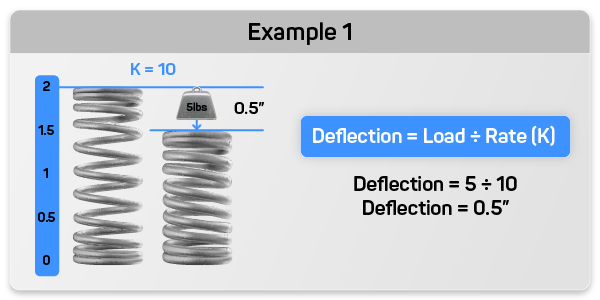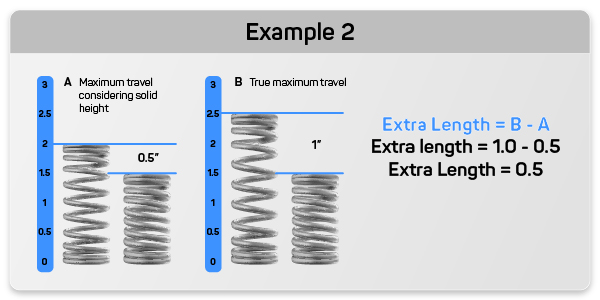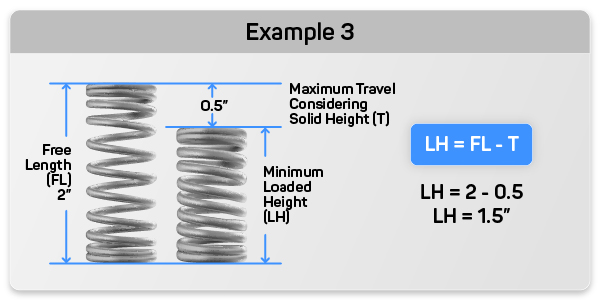Compression Spring Deflection Calculation
Attention! Input results shown will be +/- 10% from middle value. Hint: The closer your min and max inputs are, the more accurate your results will be!
Attention! Input results shown will be +/- 10% from middle value. Hint: The closer your min and max inputs are, the more accurate your results will be!
Attention! Input results shown will be +/- 10% from middle value. Hint: The closer your min and max inputs are, the more accurate your results will be!
Definition:
The calculation of the spring travel, also known as spring deflection, using spring rate and a required load.
A spring will deflect under any kind of load even if it is only by a few thousandths of an inch. If you require the spring to remain stationary and not travel un a certain initial load, you might want to consider making the free length a bit longer to pre-load it at the height you need it to be. To calculate the amount of deflection your spring will travel under this initial load you must divide the load by the compression spring’s rate as shown in Example 1. The result will be the amount of deflection your spring will compress under that load. Our compression spring calculator gives you two values in regards to safe deflection.
Example 1.)

These values you are provided with are True Maximum Travel and Maximum Travel Considering Solid Height. Maximum Travel Considering Solid Height is the actual amount of safe travel you can achieve out of your latest design. True Maximum Travel, on the other hand, is the travel you will be able to achieve if the spring’s free length were longer. If these two values are different from each other, the True Maximum Travel will be a higher number. If you subtract the Maximum Travel Considering Solid Height from the True Maximum Travel, the result will be the amount of length you are still able to add to your spring to produce more travel.
Example 2.)

Example 2 in the images to the right, shows a spring with a True Max Travel of 1” and a Maximum Travel Considering Solid Height of 0.5”. The Maximum Travel Considering Solid Height of 0.5” is then subtracted from the True Maximum Travel of 1” and gives you a result of 0.5” which you are able to add to the compression spring’s free length. Once you’ve added the additional length, you’ll be able to travel 1” safely all the way down to solid height. If you add more length to the spring than the 0.5”, you might still be able to travel the 1” but the
Another value shown in the “Safe Travel” section is minimum loaded height. This is the loaded height your spring will deflect to once it travels the maximum travel considering solid height. You may calculate this value by subtracting the maximum travel considering solid height from the spring’s free length as shown in Example 3.
Example 3.)






